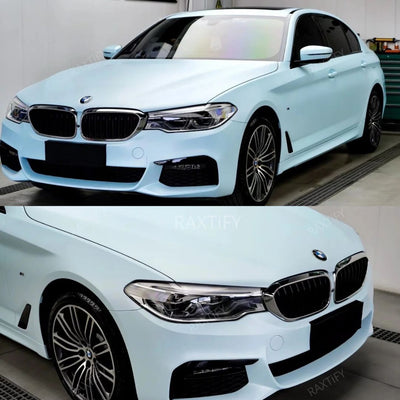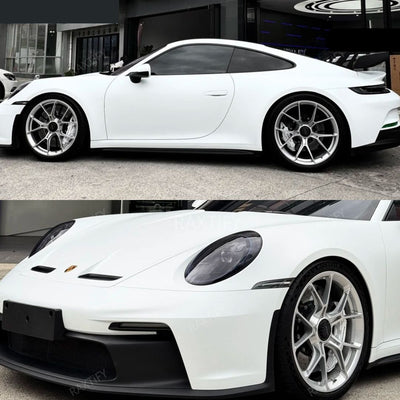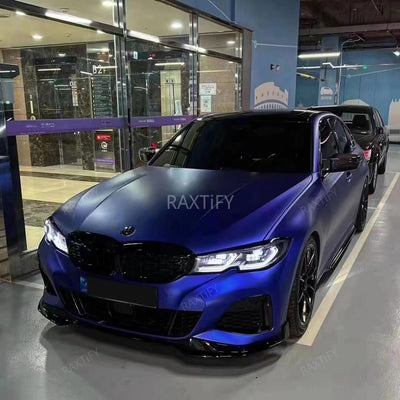Introduction
Adding window tint to your car not only enhances its aesthetic appeal with a sleek and luxurious look but also turns it into a stunning sight on the roads. While the process might seem complex, with the right tools, a bit of expertise, and some patience, it's achievable. So, how exactly do you tint car windows? Whether you're a seasoned DIY enthusiast with a well-equipped garage or a beginner seeking to undertake this project, this guide will walk you through the essential steps.
We'll explore the necessary materials, the step-by-step process, and also discuss the benefits and potential challenges of window tinting. Ready to transform your car into an eye-catching masterpiece? Let's dive into the world of window tinting and see how you can achieve that perfect tint!
Understanding Car WindowTinting
Car window tinting involves applying a specialized laminate film to a vehicle's windows, primarily to darken them. This customization is increasingly popular among car owners looking to upgrade their vehicles. Window tinting varies depending on the vehicle and the specific type of film used, each serving a unique purpose.
The aesthetic appeal of a professionally tinted car window is undeniable. It's essential to select a high-quality film from the market to ensure the best outcome. One of the primary reasons people opt for window tinting is to shield themselves from the sun's harmful rays, which can be detrimental to both eyes and skin. Additionally, tinting provides a level of privacy for the occupants of the vehicle. Another significant benefit is the reduction of heat inside the car, maintaining a cooler interior.
While professional installation is often recommended for window tinting, it's also possible to undertake this project yourself. With the growing popularity of DIY window tinting, pre-cut films are readily available to fit various window sizes, making it easier for car enthusiasts to personalize their vehicles.
Exploring Car Window Tint Options
Choosing the right tint for your car windows is crucial. Here's an overview of the various types available, to help you make an informed decision:
- Dyed Tint Film: A popular and cost-effective option, this film consists of multiple dyed plastic layers. It's great for enhancing your car's look but less effective against UV rays. Keep in mind, it's not a permanent solution and may fade over time.
- Metalized Tint Film: This type incorporates tiny metal particles within the film layers, offering superior sunlight blocking. It's more durable and doesn't fade like dyed films. However, it's pricier and might disrupt cell phone and GPS signals.
- Carbon Tint Film: Known for its unique matte appearance, thanks to carbon particles, this tint stands out. It provides excellent UV protection and thermal insulation, keeping your car warm in winter and cool in summer. Given its numerous benefits, it's on the higher end of the price spectrum.
- Ceramic Tint Film: This premium option excels in both look and functionality. It contains ceramic particles that block almost all UV rays, reduces glare while maintaining visibility, and is highly resistant to scratches and damage. This, however, is the most expensive choice.
Each type has its pros and cons, so consider your needs and budget when selecting a window tint for your vehicle.
Choosing the Right Car Window Tint: Essential Considerations
Selecting the perfect window tint for your car can be a bit daunting given the range of options available. However, these key points will guide you in making an informed decision:
- Legal Compliance: First, familiarize yourself with your state's window tinting regulations, and those of any states you frequently travel to. This is crucial to avoid legal issues.
- UV Protection Level: Assess the level of UV and IR light protection offered by the tint. High-quality tints not only extend the life of your car's interior like seats and dashboard but also reduce the need for air conditioning, which can lead to fuel savings.
- Visibility Factors: Be cautious with extremely dark tints. They can hinder your visibility, particularly at night, and are often not permissible in many states.
- Research Thoroughly: Always read reviews and conduct thorough research before purchasing any car window tint product.
- Quality Matters: Investing in a high-quality tint film is essential for durability and long-term performance.
Remember, the right tint can significantly enhance your driving experience while ensuring compliance and safety.
Ensuring You Have the Right Tools for Car Window Tinting
Achieving success in any venture often hinges on the availability of appropriate tools, and this is especially true when it comes to tinting car windows. After selecting the ideal tint film for your car windows, the following tools are essential for a seamless and effective tinting process:
-
High-Quality Window Tint: The first and foremost requirement is the window tint itself. Opting for a high-grade window tint is crucial. It’s important to choose a tint that not only complies with legal standards but also meets your personal requirements in terms of visibility and heat rejection.
-
Spray Bottle: A large spray bottle, capable of holding up to a gallon of water, is necessary. Fill it with a mixture of warm water and a mild dish soap. This solution is used during the application process to clean the windows and help in positioning the tint.
-
Precision Cutting Knife: A sharp, reliable cutting knife is indispensable for trimming the tint film to the exact dimensions of your car windows. Look for a knife that promises clean and accurate cuts, ensuring a professional look to your tinting work.
-
Squeegee: A squeegee is an invaluable tool in the tinting process. It is used to smooth out the film, eliminating any creases or bubbles. This not only ensures a neat finish but also helps in proper adherence of the tint film to the window surface.
Remember, the quality of your tools can greatly influence the outcome of your window tinting project. Investing in the right tools not only makes the process easier but also ensures a more professional and lasting result.
How To Apply Window Tint to Your Car
Tinting car windows is an effective way to enhance your vehicle's appearance and privacy. Here's a simplified guide to help you achieve a perfect window tint.
Step 1: Preparing the Window
First, ensure the workspace and the car's interior are spotless. Any trace of dirt or grease on the window can hinder the tinting process.
- Clean the area where you'll be working. An indoor setting like a garage is ideal.
- Vacuum and wipe down the interior of your car to eliminate dust.
- Remove any stickers from the windows. Clean off adhesive residues using a solution of dish soap and water. A large spray bottle, capable of holding a gallon, is recommended for this task. Pay special attention to the edges and lower part of the window. A soft squeegee can be useful to remove dirt and ensure a clean surface.
- Dry the window thoroughly with a microfiber cloth, ensuring the edges are not overlooked. Finally, roll the window up completely.
Step 2: Measuring the Tint
Lay out the tint film with the adhesive side facing you. Spray soapy water on the window's exterior and place the film over it, leaving about 2-3 inches extra around the edges. Keep the liner intact at this stage, and remember to measure the film in reverse.
Step 3: Cutting the Tint
With the correct measurements, start cutting the tint film to fit your window.
- Spray the front (non-adhesive side) of the film with soapy water. This allows it to temporarily adhere to the window's exterior for easier cutting.
- Use a precision knife for a clean cut. Begin by cutting along the bottom and left edges of the window.
- Shift the film slightly to the left, leaving an extra inch on this side, and then cut along the right edge.
- After repositioning the film, cut along the top edge, ensuring there is half an inch of extra film on all sides.
































